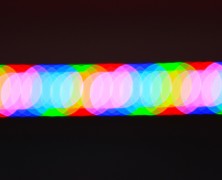Li fi technology, also known as light fidelity or Visible Light Communication (VLC), uses flickering LED lights to transfer wireless data. If you’re reading this, chances are you’re familiar with Wi-fi and have probably already used it at some point today. Wi-fi is a technology that allows you to use radio waves to connect to the internet. But what if instead of spewing out Wi-fi radio waves throughout your house and apartment, you used highly directed beams of LED light? A Li-fi connection would allow your laptop, smartphone or tablet to connect to the internet via the same lights used to light your room. The LED networks work by flickering light at a rapid fire rate, invisible to the human eye. To connect to a Li-fi network, devices must be equipped with the capability to recognize the LED light signals and use them to transfer data. The term “Li-fi” was coined by Harald Haas at a 2011 TED talk, during which he explained that by using a flickering LED light outfitted with a microchip, data can be transferred to laptops and mobile devices. The advantages of Li-fi over Wi-fi are numerous; they increase network security, don’t emit radiation and speed up connection rates. A multitude of micro-LED bulbs allows streams of light to be beamed in parallel, with each stream multiplying how much data can be carried over the connection. Each bulb is enabled to handle millions of changes in light intensity per second, acting as an extremely fast on and off switch and allowing a high speed transfer of binary data – a series of ones and zeros. “If you think of a shower head separating water out into parallel streams, that’s how we can make light behave,” Professor Harald Haas told the BBC....






